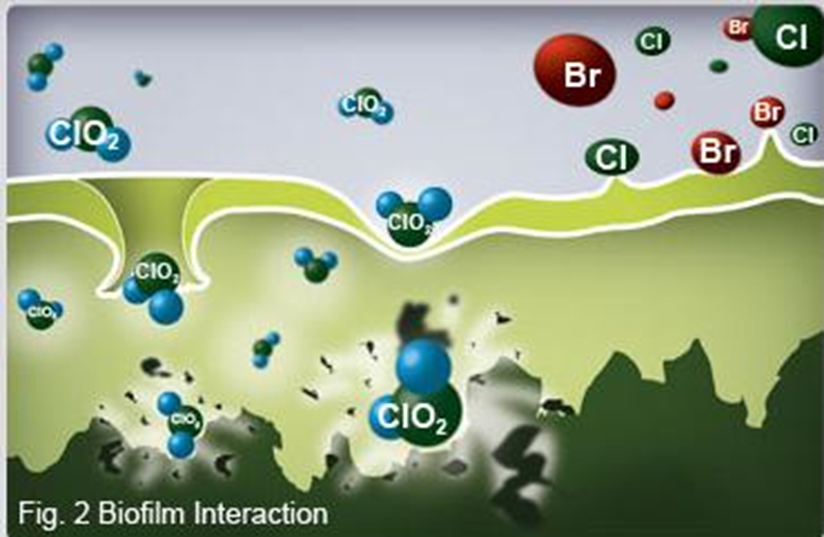Tech & Tools
Technical information
- HOME
- Tech & Tools
- Chlorine dioxide
Chlorine dioxide
What is chlorine dioxide
Chlorine dioxide is a disinfectant (oxidizer) that has a strong oxidizing power similar to chlorine and ozone.
It was also evaluated as an alternative chlorine in “ACT21”, which was undertaken by the Japan Water Resarch Center from 1997 to 2001, and was “water purification or water purification process” according to the “Ministry Ordinance that Establishes Technical Standards for Water Supply Facilities” in April 2000. It is an oxidizer approved as a “chemical to be injected into water”.
Characteristics of chlorine dioxide
- Since it has stronger oxidizing power than chlorine, it has a bactericidal effect even at low concentrations.
- Almost no trihalomethanes are generated even in the presence of organic matter
- Highly permeable to biofilms
- Persistent, so bactericidal effect can be maintained
- Decomposes phenolic compounds that cause offensive odors in tap water
- Oxidizing power over a wide pH range
Chlorine dioxide regulation
The regulations for chlorine dioxide in Japan (water supply industry) are as follows. (As of May 2020, jurisdiction: Ministry of Health, Labor and Welfare)
- Water industry
The injection rate of chlorine dioxide is 0.6 mg / L or less, and the chlorate ion derived from chlorine dioxide is 0.6 mg / L.
(Ministry of Health, Labor and Welfare: Water quality management target setting items and target values (27 items)) In addition, as water quality monitoring items, guideline values of chlorine dioxide 0.6 mg / L and chlorate ion 0.6 mg / L are set, and chlorine dioxide is used. If so, daily inspection is mandatory. - Food industry
It is approved as a limited food additive as an oxidative bleach for cherries and butterbur, and as a flour bleach.
(Designated additive: No. 285) - Pool industry
Chlorine dioxide concentration shall be 0.1 mg / L or more and 0.4 mg / L or less. The chlorous acid concentration should be 1.2 mg / L or less.
Use
- Bleach / Bactericide
Pulp / fiber bleach
Wastewater disinfectant
Deodorant - cooling water
Slime removal of circulating cooling water
Anti-biofouling agent for marine organisms when using seawater at power plants
Algae and mold remover for various facilities - Beverage use
Pre- and intermediate chlorination at water purification plants (suppression of trihalomethane generation)
Sterilization of river water and groundwater
Sterilization of soft drinks and raw beer - Water purification applications
Fungicide at CIP (Cleaning In Place)
Disinfectant in bottle cleaning and filling equipment (filler)
Floor cleaning water for food processing factory facilities (hygiene management)
Dairy wash water
* Not limited to the above uses, there may be individual restrictions on use in Japan.
Head Office
1-12-11 Tagawakita, Yodogawa-ku,Osaka
532-0021
Overseas Business Department
TEL +81-6-6301-6460
FAX +81-6-6308-3022





